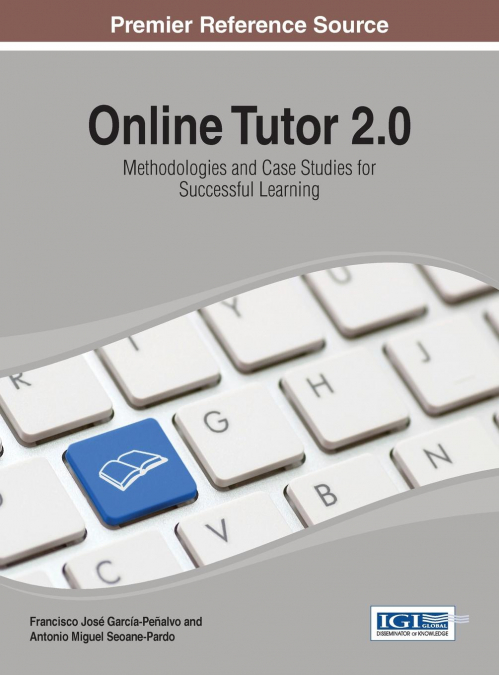
INTRODUCCIÓN
CAPÍTULO 1. RECONOCIMIENTO DE LAS CARACTERÍSTICAS DE LENGUAJES DE MARCAS
1.1 dEFINICIÓN y clasificación de lenguajes de marcas
1.2 Tipos de lenguajes de marcas
1.3 Evolución de los lenguajes de marcas
1.4 Etiquetas, elementos y atributos
1.5 Organizaciones desarrolladoras
1.6 Utilización de lenguajes de marcas en entornos web
1.7 Gramáticas
1.7.1 DTD
1.7.2 Esquema XML
1.7.3 Relax NG
RESUMEN DEL CAPÍTULO
TEST DE CONOCIMIENTOS
CAPÍTULO 2. LENGUAJES PARA LA VISUALIZACIÓN DE INFORMACIÓN
2.1 El Modelo de objetos del documento
2.2 HTML
2.2.1 Versiones
2.2.2 Etiquetas y elementos
2.2.3 Atributos
2.2.4 Referencias a caracteres
2.2.5 Comentarios
2.2.6 Estructura básica de un documento
2.2.7 Cabecera del documento
2.2.8 Cuerpo del documento
2.2.9 Trabajando en el cuerpo del documento
2.2.10 Hipertexto
2.2.11 Marcadores
2.2.12 Trabajando en la cabecera del documento
2.2.13 Inclusión de imágenes
2.2.14 Formularios
2.2.15 Tablas
2.2.16 Marcos
2.2.17 Capas
2.3 XHTML
2.3.1 S intaxis
2.3.2 Versiones
2.4 Hojas de estilo
2.4.1 S intaxis de CSS
2.4.2 U so de CSS dentro de HTML y XHTML
2.4.3 Información de estilo en el cuerpo del documento
2.4.4 Información de estilo en la cabecera del documento
2.4.5 Información de estilo en hojas externas
RESUMEN DEL CAPÍTULO
EJERCICIOS PROPUESTOS
TEST DE CONOCIMIENTOS
CAPÍTULO 3.LENGUAJES PARA EL ALMACENAMIENTO Y TRANSMISIÓN DE INFORMACIÓN
3.1 Tipos de lenguajes
3.2 Definición de XML
3.3 estructura y sintaxis de xml
3.3.1 Etiquetas, elementos y atributos
3.3.2 Caracteres especiales
3.3.3 Instrucciones de procesamiento
3.3.4 Comentarios y secciones CDATA
3.4 Documentos XML bien formados
3.5 Espacios de nombres
3.5.1 Declaración de espacios de nombres
3.5.2 Espacios de nombres por defecto
RESUMEN DEL CAPÍTULO
EJERCICIOS PROPUESTOS
TEST DE CONOCIMIENTOS
CAPÍTULO 4. DEFINICIÓN DE ESQUEMAS Y VOCABULARIOS EN XML
4.1 DTD
4.1.1 Bloques para construir una DTD
4.1.2 Secuencias de elementos: estructura con hijos
4.2 Esquemas
4.2.1 Elemento raíz
4.2.2 Elementos simples
4.2.3 Atributos
4.2.4 Restricciones
4.2.5 Elementos complejos
4.2.6 Secuencia de elementos
4.3 V alidación de documentos XML
4.3.1 Documentos bien formados
4.3.2 Documentos válidos
4.3.3 Herramientas para validar
4.4 Caso práctico
RESUMEN DEL CAPÍTULO
EJERCICIOS PROPUESTOS
TEST DE CONOCIMIENTOS
CAPÍTULO 5. CONVERSIÓN Y ADAPTACIÓN DE DOCUMENTOS XML
5.1 Transformación de documentos (XSL)
5.2 Elementos básicos
5.2.1 xsl:for-each
5.2.2 xsl:value-of
5.2.3 xsl:sort
5.3 Operadores en XSL
5.3.1 Elemento xsl:if
5.3.2 Elemento xsl:choose
5.4 Las plantillas
5.4.1 Elemento xsl:template
5.5 Caso práctico
RESUMEN DEL CAPÍTULO
EJERCICIOS PROPUESTOS
TEST DE CONOCIMIENTOS
CAPÍTULO 6. ALMACENAMIENTO DE INFORMACIÓN
6.1 Si stemas de almacenamiento de la información
6.2 Utilización de XML para el almacenamiento de la información
6.2.1 Bases de datos relacionales
6.2.2 Transformación a XML
6.3 Len guajes de consulta y manipulación
6.3.1 Herramienta Qizx Studio
6.3.2 A dministración de librerías XML
6.4 XQuery
6.5 ConsultaS
6.5.1 D e FLWOR a HTML
6.6 Act ualización
6.6.1 Inserción
6.6.2 Reemplazo
6.6.3 Borrado
6.7 Exportación de librerías XML
6.8 Otras funciones o librerias
6.9 Casopráctico
RESUMEN DEL CAPÍTULO
EJERCICIOS PROPUESTOS
TEST DE CONOCIMIENTOS
CAPÍTULO 7. APLICACIÓN DE LOS LENGUAJES DE MARCAS A LA SINDICACIÓN DE CONTENIDOS
7.1 Introducción a la sindicación de Contenidos
7.2 Estructura de un sistema de sindicación
7.3 Estándares actuales para sindicación de contenidos
7.3.1 RSS 0.91 y RS 0.92
7.3.2 RSS 1.0
7.3.3 RSS 2.0
7.4 Si stemas de agregación y directorios de canales
RESUMEN DEL CAPÍTULO
EJERCICIOS PROPUESTOS
TEST DE CONOCIMIENTOS
CAPÍTULO 8. SISTEMAS DE GESTIÓN EMPRESARIAL
8.1 Introducción a los ERP’s
8.2 composición de un erp
8.3 Implantación
8.4 S EGURIDAD
8.5 Importación y exportación de información
8.6 CAso práctico
RESUMEN DEL CAPÍTULO
EJERCICIOS PROPUESTOS
TEST DE CONOCIMIENTOS
CAPÍTULO 9. HERRAMIENTAS
9.1 Software para diseño web
9.1.1 A dobe Dreamweaver
9.1.2 KompoZer
9.1.3 Expression Web
9.2 he rramientas para la validación de documentos xml vía web
9.2.1 Markup Validation Service
9.2.2 XmlValidation
9.2.3 Validome
9.3 S oftware para EDITAR Y validaR documentos xml
9.3.1 S erna Free
9.3.2 oXygen/
9.3.3 TotalEdit
9.3.4 XML Notepad
9.3.5 V ervet Logic
9.4 Si stemas de gestion de bases de datos xml nativas
9.4.1 Qizx
9.4.2 Oracle
9.4.3 Microsoft SQL Server
9.4.4 MySQL
9.4.5 eXist
9.5 SOt ware para gest
After centuries of rethinking education and learning, the current theory is based on technology’s approach to and affect on the planned interaction between knowledge trainers and trainees. Online Tutor 2.0: Methodologies and Case Studies for Successful Learning demonstrates, through the exposure of successful cases in online education and training, the necessity of the human factor, particularly in teaching/tutoring roles, for ensuring the development of quality and excellent learning activities. The didactic patterns derived from these experiences and methodologies will provide a basis for a more powerful and efficient new generation of technology-based learning solutions for high school teachers, university professors, researchers, and students at all levels of education.